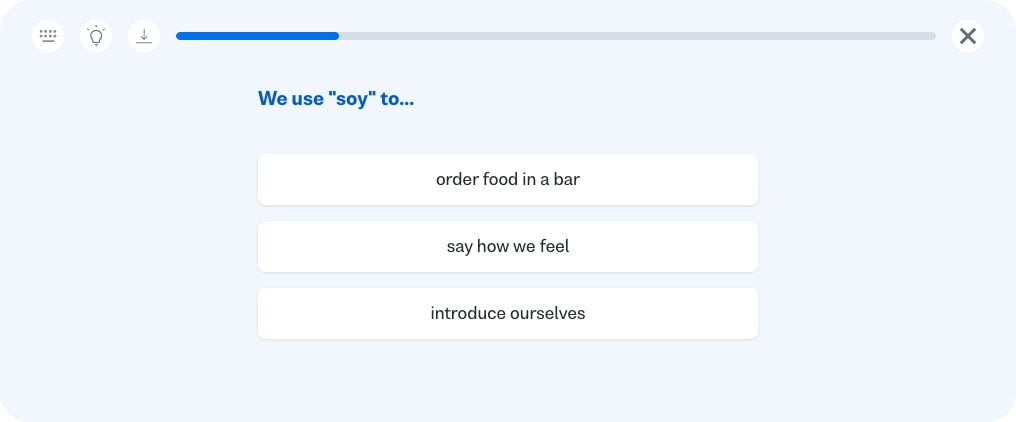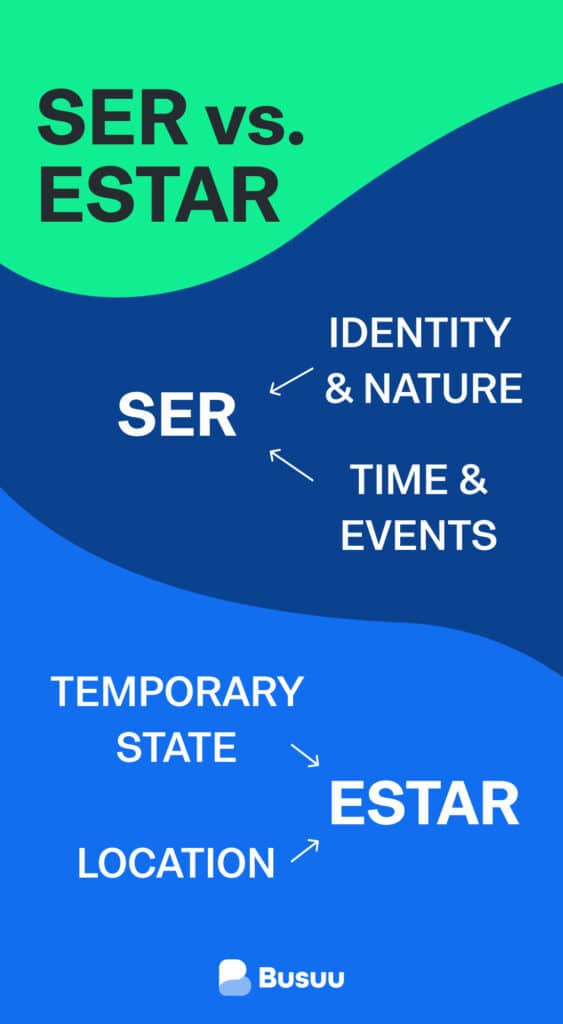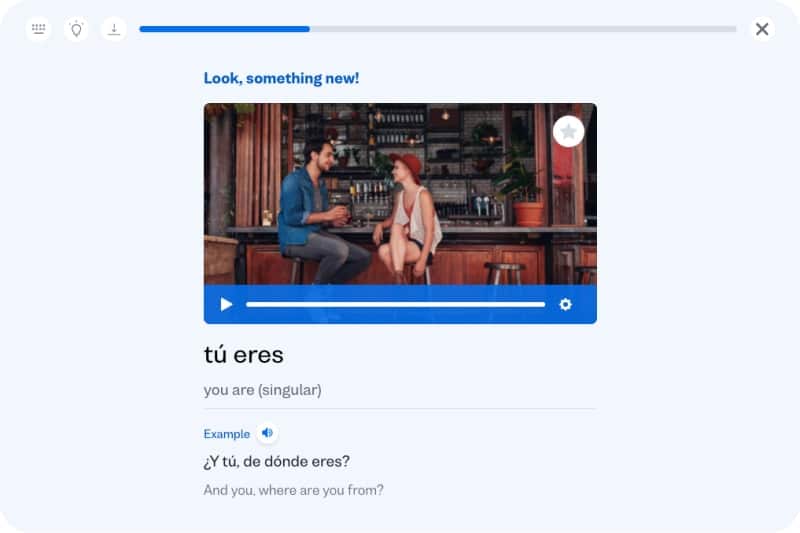Home » Ser vs estar guide: 4 golden rules to follow
Short answer:
We use ser to describe:
We use estar to describe:
Longer, more thorough answer:
Ser or estar: to be or… to be?
If you have been learning Spanish for some time, you’ll know that knowing when to use ser and when to use estar can be really challenging.
Much like the difference between Spanish prepositions por and para, at first using them correctly might feel like a struggle. But the more exposure and conversation practice you get, the more it will become second nature to you.
Both verbs ser and estar mean “to be”, but there’s more to it than that. The meaning of a sentence can change, depending on which verb you use.
Let me explain with an example.
Mistakenly telling someone, for instance, that estás aburrido (you’re bored) instead of eres aburrido (you’re boring) could have socially catastrophic consequences!
Sometimes, the rules for using ser and estar can be difficult to spot. But don’t worry, I’m here to help.
Now, I’m not going to give you a boring, long list of rules to memorise (I’m picturing you yawning at the very prospect!).
Instead, I’m giving you four golden rules to guide you. Follow them, and you’ll understand everything there is to know about these two tricky verbs!
Seriously in need of help, but not much of a reader?

Busuu’s app offers an online Spanish course with tons of fun, interactive ways to get to grips with the Spanish verbs ser and estar.

Ser describes your intrinsic characteristics, or your personal identity – think about every single characteristic that shapes part of who you are.
These characteristics include someone’s:
Use ser to describe what someone or something looks like, or what people are like – i.e., their personality traits.
For example:
| Carolina es una chica muy guapa y además es súper simpática. |
| Carolina is a very pretty girl and she’s also very nice. |
You can also use ser to describe where you are from and your nationality.
For example:
| Yo soy de Argentina, pero mi padre es chileno. |
| I am from Argentina, but my father is Chilean. |
A job is also part of your identity – who you are. Your profession is the community you belong to – a lifestyle you identify with.
For example:
| Soy profesora de español. |
| I am a Spanish teacher. |
Estar describes temporary states – how you are feeling. It refers to something you experience, the exact opposite of your nature or identity.
Let’s have a look at this example:
| Estoy muy cansado porque he trabajado todo el día sin parar. |
| I’m very tired because I have been working non-stop all day. |
See: I’m describing how I’m feeling after running around like a headless chicken at work.
In this case, I’m using estar rather than ser because I’m describing my current state. I haven’t got chronic fatigue – it’s not part of my fixed identity. I’m just tired because, at this moment in time, I’m feeling overworked.
Not sure you get the difference between using ser for identity, and estar for state?
It’s a tricky one, we know. Click here to skip to our section on identity (ser) versus state (estar).
Whether you’re asking what time it is, telling someone what day or the month you’re in, or talking about something that is taking place, it’ll be time (see what I did there?!) to use ser.
Here’s an example involving time:
| Mi cumpleaños es en octubre. |
| My birthday is in October. |
Here’s another – this time, when someone tells someone where an event is occurring.
For example:
| El concierto es en el auditorio. |
| The concert is in the auditorium. |
When describing where someone or something is, you also use estar.
For example:
| Juan está en casa. |
| Juan is at home. |
Four golden rules covered. Great!
Now, let’s talk specifics. Remember how I said that sentences can have completely different meanings, depending on whether you use ser or estar?
Well, this is particularly true when it comes to expressing someone or something’s identity, versus someone or something’s temporary state.
Here are three examples of scenarios where, if you pick the wrong verb, things can get lost in translation.
In the ser example, you’re describing someone’s personality. Try not to take it personally, Alberto!
| Alberto es aburrido. |
| Alberto is boring. |
Meanwhile in the estar example, you’re talking about Alberto’s mood – how he is feeling at a specific moment in time.
| Alberto está aburrido. |
| Alberto is bored. |
Here, you are saying that Alicia is an intelligent person. Her intelligence is part of her identity.
| Alicia es muy lista. |
| Alicia is very clever. |
But it’s a different story with the verb estar. In this example, you’re describing Alicia’s state.
| Alicia está lista. |
| Alicia is ready. |
Using the verb ser here might make you blush – you’re being told that you’re an attractive human being. That’s not something you can change – in the words of Lady Gaga, you’re born this way!
| ¡Qué guapo eres! |
| You are very good looking! |
Using the verb estar here is still cause for you to blush – but the compliment is more specific to the moment. Here, you’re being told that you look particularly good in the shirt you’re wearing.
| ¡Qué guapo estás con esa camisa! |
| You look so good in that shirt! |
It sounds quite straightforward, right? In truth, once you’ve got your head around everything in this post, it actually is!

Have more Spanish grammar and tricky language concepts explained on Busuu, the award-winning language-learning app.